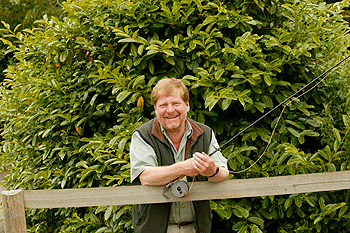Gamekeeper

So here we are mid-close season. Not too long now till the Glorious Thirteenth. The Twelfth falls on a Sunday this year, so those who are lucky enough to be out at the start will need to wait an extra day. For the rest of us, another couple of weeks and we might hope for a shot at a duck or a partridge.
So, when did you last pick up a gun? If pest and predator control is part of your game, you may well have been shooting almost daily through the close season, but for most of us, the end of the February pigeon evenings really marks the moment that the gun goes away. From then on, we are very likely to get rustier and rustier, and that means a poorer performance next time we shoot.
The standard advice is to set off to the shooting school for a couple of sessions at clays under the watchful eye of a professional. Good advice it is, too ? any practice is good, but that bit of extra guidance can iron out all sorts of little issues and possible faults that compromise performance.
Pointing the gun in the wrong place is surely the main cause of missing, but there are other possibilities. The shotgun sends out a random cloud of shot, and a hole in that pattern that a bird can fly through is not entirely beyond the realms of possibility. This applies particularly at longer ranges, especially if you are using a larger shot size to try to knock down the high ones. You can also ?miss? because the target is out of range, too.
Improve Your Shooting days
In the early spring , I went on one of BASC?s Improve Your Shooting days. I found this very helpful, and would recommend them to anyone. We broke a few clays under expert guidance, but there was so much more to it than that. To start with, we had a presentation about what it takes to get reliable kills out of a shotgun, with valuable thoughts on how to avoid wounded birds and the consequent loss of game that should be in the bag and the food chain.
After that, there was a nifty little exercise on range judgement. ?How far away are those lofted pigeon decoys, and which ones would you shoot at?? The nearest was about 45 yards, and if I had managed to stalk that close to a real one, I would probably have given it a try ? I bet it would have flown away and not tumbled from its perch!
More to the point, our group?s ability to judge range was very variable, especially with the 80-yard bird. While we all knew that it was out of range, our guesses were mostly pretty wide of the mark.
Then we set off to break some clays, and were first presented with a 30-yard crosser ? not a long one by most people?s standards. We all broke some, but I don?t recall that anyone got 10 out of 10.
When we moved back to 40 yards things were altogether different, and I think we were all surprised at how much less effective we were at what many Guns would consider a normal gameshooting range. From my own point of view, what I really concluded was that at that distance I just could not consistently ?read? the target.
Now, as the pattern plate that followed showed, I am an open-chokes shooter. For a pot-hunting roughshooter, who also shoots over decoys, long range is not that important, and, rightly or wrongly, I reckon that a good spread helps fill my particular bag.
Those who regularly address high-driven birds would probably go for tighter chokes and slightly larger shot than I do, and they may well be more consistent at longer range. However, there were some regular driven shooters there, too, and I don?t think they will mind me saying that they were not that much better, especially if I keep their names secret!
Understanding your abilities
We had further good fun with the ST-2 shooting simulator, trying our hand at driven grouse, high pheasants, and even running boar. This was much more realistic than I had expected, and proved again that I was not as consistent as I would like to think.
So, for me, what all this adds up to is that there is more to successful gameshooting than being on target. Putting birds in the bag and avoiding wounding losses revolves around range judgement as well as accuracy. It also relies on being consistent and understanding your own abilities with your chosen gun and cartridge. It may also mean passing up the odd awkward bird, even if it is not that far away.
Practice at the shooting school is well worthwhile, but I would recommend a day with BASC, too, as I?m sure you will enjoy it as well as widening your horizons.








